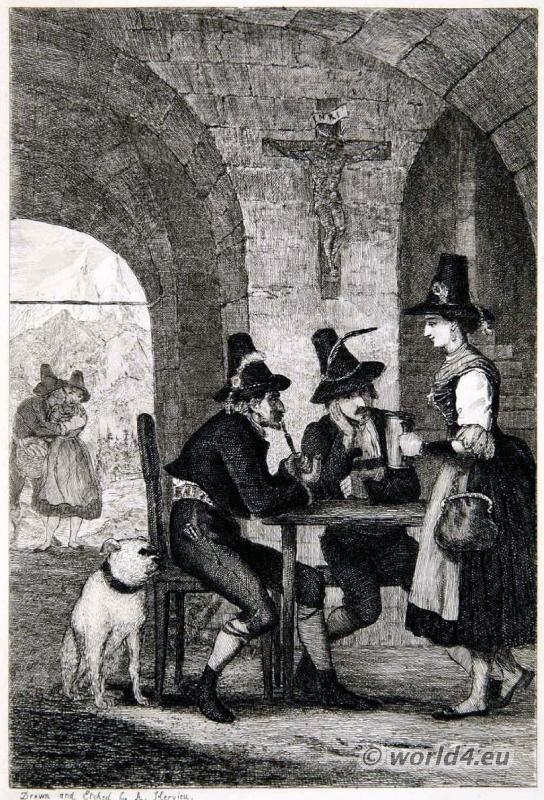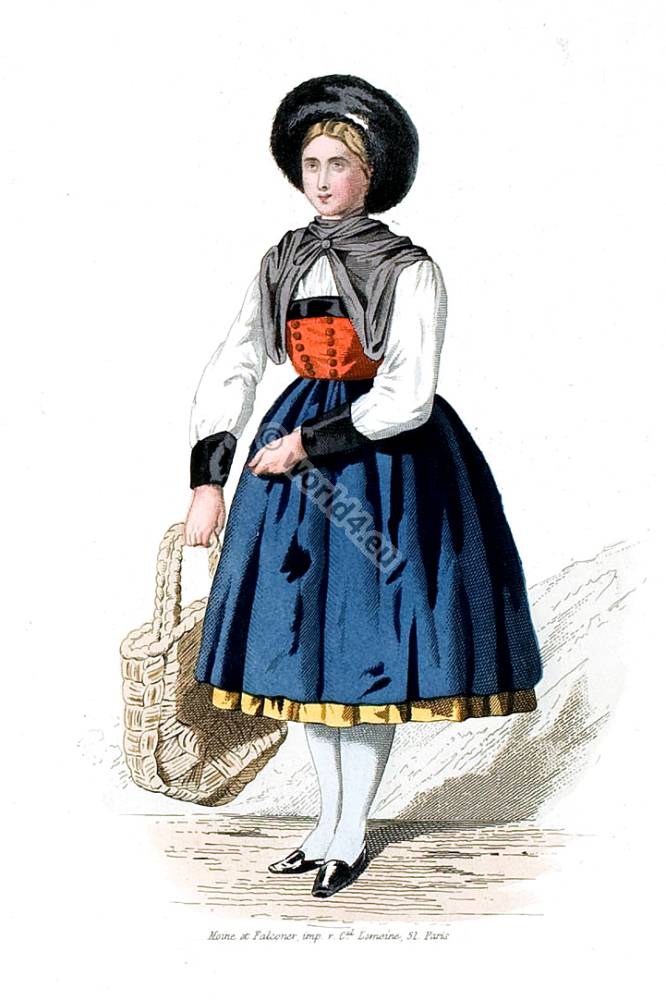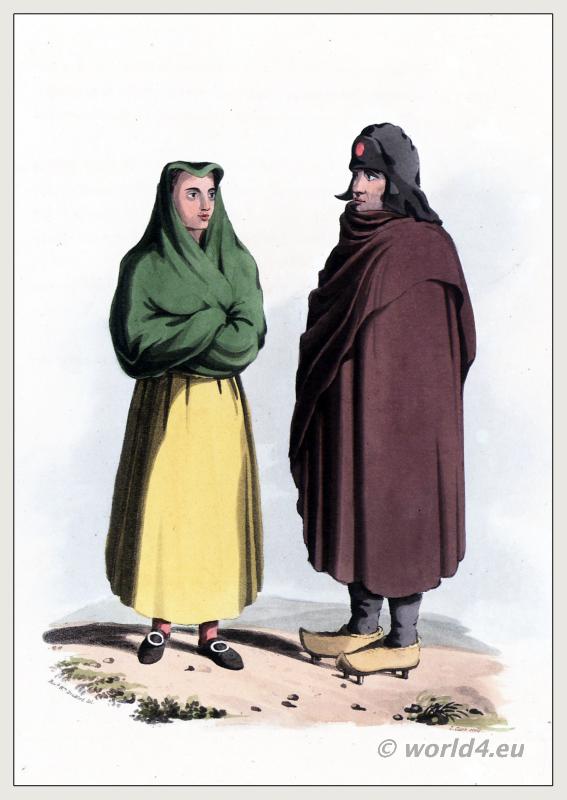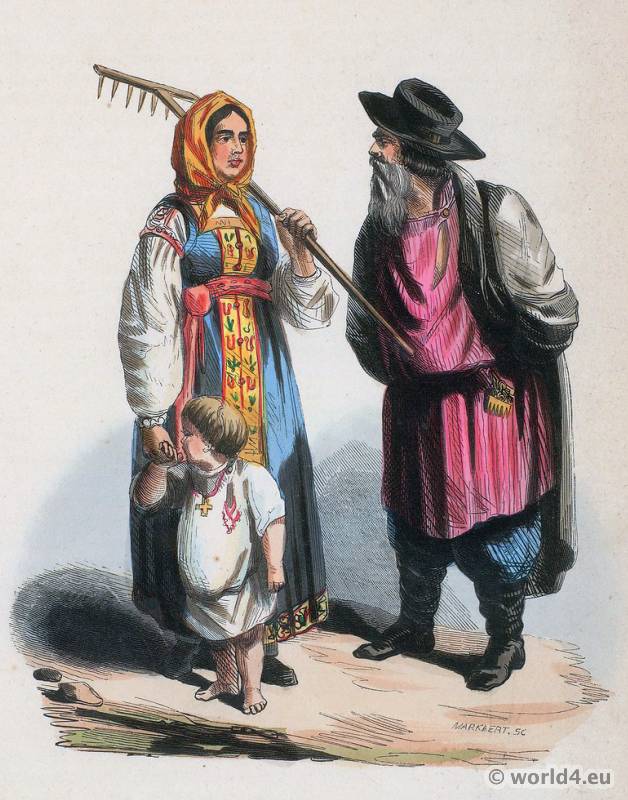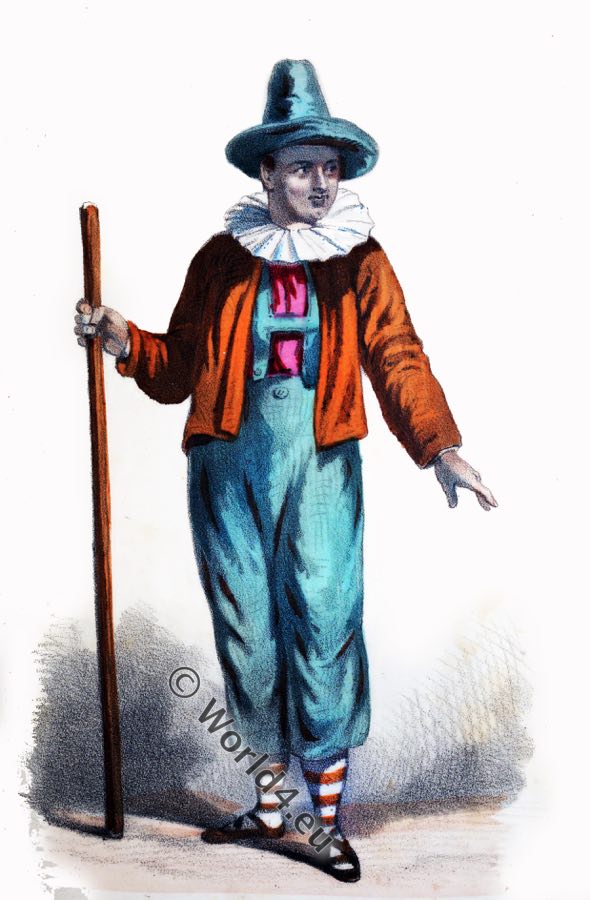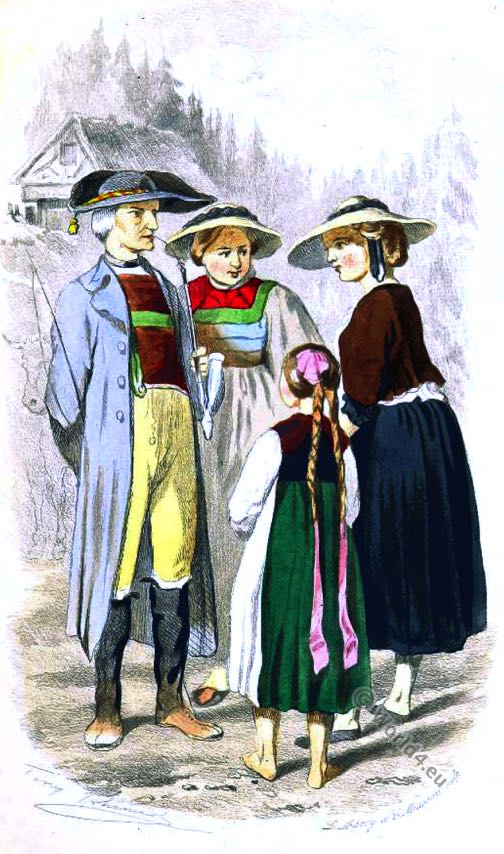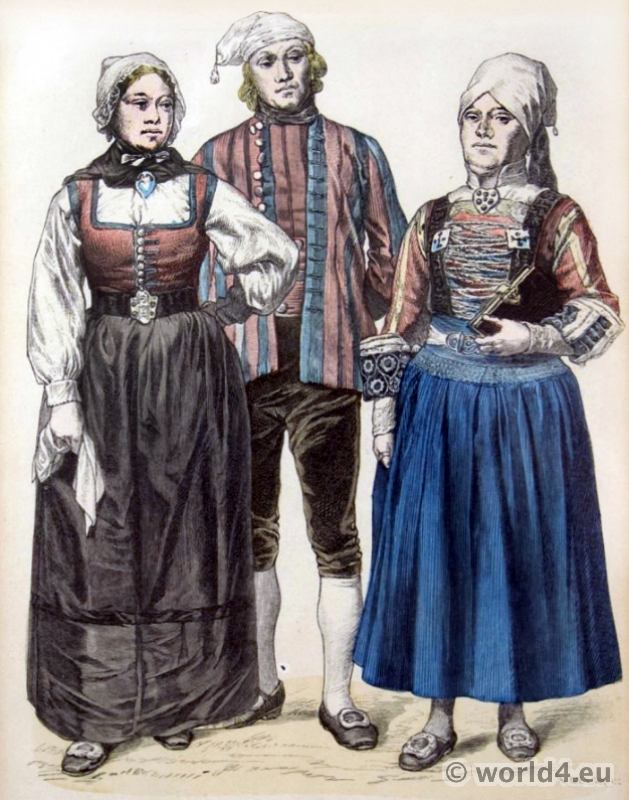Tyrolean peasants from St. Johann in Tirol 1835.
Tavern scene near the village St. Johann in Tirol. Two Tyrolean peasants in traditional dress smoking pipe. Their clothing consists Knee-free leather pants, wide leather belts with quill embroidery and embroidered suspenders, a high pointed hat decorated with a feather of a wood grouse. The waitress in a traditional Dirndl of dark woolen fabric, embroidered apron, colorful scarf and a high hat, brings a jug of beer. In the background, a couple can be seen.

